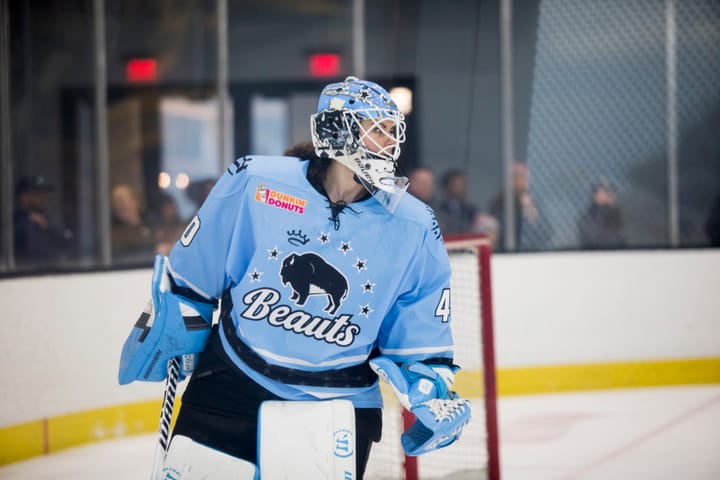The Lamoureux sisters are on a mission
The relentless twin sisters have been offensive zone standouts at the PyeongChang Olympics
Team USA is just hours away from trying to win its first gold medal since the 1998 Nagano Games. Two of the reasons that Robb Stauber’s team will be bringing home at least a silver medal are the Lamoureux twins.
Through the first four games of the tournament Monique Lamoureux-Morando and Jocelyne Lamoureux-Davidson have been two of USA’s best forwards. That statement is hardly a surprise to anyone who watched the sisters play in the Vancouver or Sochi Games. But back in November their role and place on this Olympic team was far from certain.
The 28-year-old twins have been the fierce beating heart of Team USA for nearly a decade. But Monique and Jocelyne were both scratched for games in the 2017 Four Nations Cup, and when they were dressed they saw very few shifts. In the months leading up to the Olympics it was hard to discern what role they would play on Stauber’s team.
Monique, arguably Team USA’s most prolific offensive defender since the Vancouver Games, made the 2018 Olympic squad as a forward. She joined her twin on Team USA’s “third line” centered by 22-year-old Kelly Pannek in USA’s preliminary game against Finland. The trio has been together at even strength ever since and the results have been exceptional.
Jocelyne is currently tied for the team lead in goals and is second on the team in points, but unlike Dani Cameranesi she doesn’t have an empty net goal boosting her numbers. Monique has two primary points through four games and is second on the USWNT in shots. Kendall Coyne is the only player getting more pucks to the net than Monique Lamoureux, and she is seeing an average of 4:39 more time on ice that includes a featured role on the top power play unit.
Together the twins already have six combined primary points in the tournament. To put that number into context: Hilary Knight has two primary points in PyeongChang and Brianna Decker has just one. One could argue that the twins have been the engine of Team USA’s offense in Korea.
In Sochi Monique had three goals and Jocelyne had five assists. This time around it’s Jocelyne who is putting the puck into the net. She has three goals in PyeongChang, including a one-timer on USA’s 5-on-3 opportunity against Finland that seemed to spark her team’s power play. She has found golden scoring opportunities in every game USA has played in this tournament, and Monique has helped create a lot of room for her to work with.
“When we get the opportunity to be on the ice together, there’s a chemistry that just never goes away,” Jocelyne said back in January. “It’s always there. So whenever we have an opportunity to have a couple shifts together or if we’re ever put on a unit or line together, it’s always there. And we’ve pushed each other every day whether it’s workouts, during on-ice training, it’s just that accountability that we’ve always had growing up.”
Thus far the Lamoureuxs and Pannek have excelled at working the cycle and going hard to the net. As a trio they play in-your-face hockey, evidenced by the nearly inevitable scrums that break out after the whistle when they’re on the ice in the offensive zone. The line blends an enticing balance of skill and physicality and has likely been Team USA’s best trio heading into the gold medal game.
Stauber deserves credit for recognizing the potential of putting the Lamoureuxs together on the same line. Their hunger to bring home gold was conspicuous long before the beginning of the tournament. If the Lamoureuxs finally win gold on Wednesday night they will have truly done it together — not just as teammates and twin sisters, but as linemates.





Comments ()